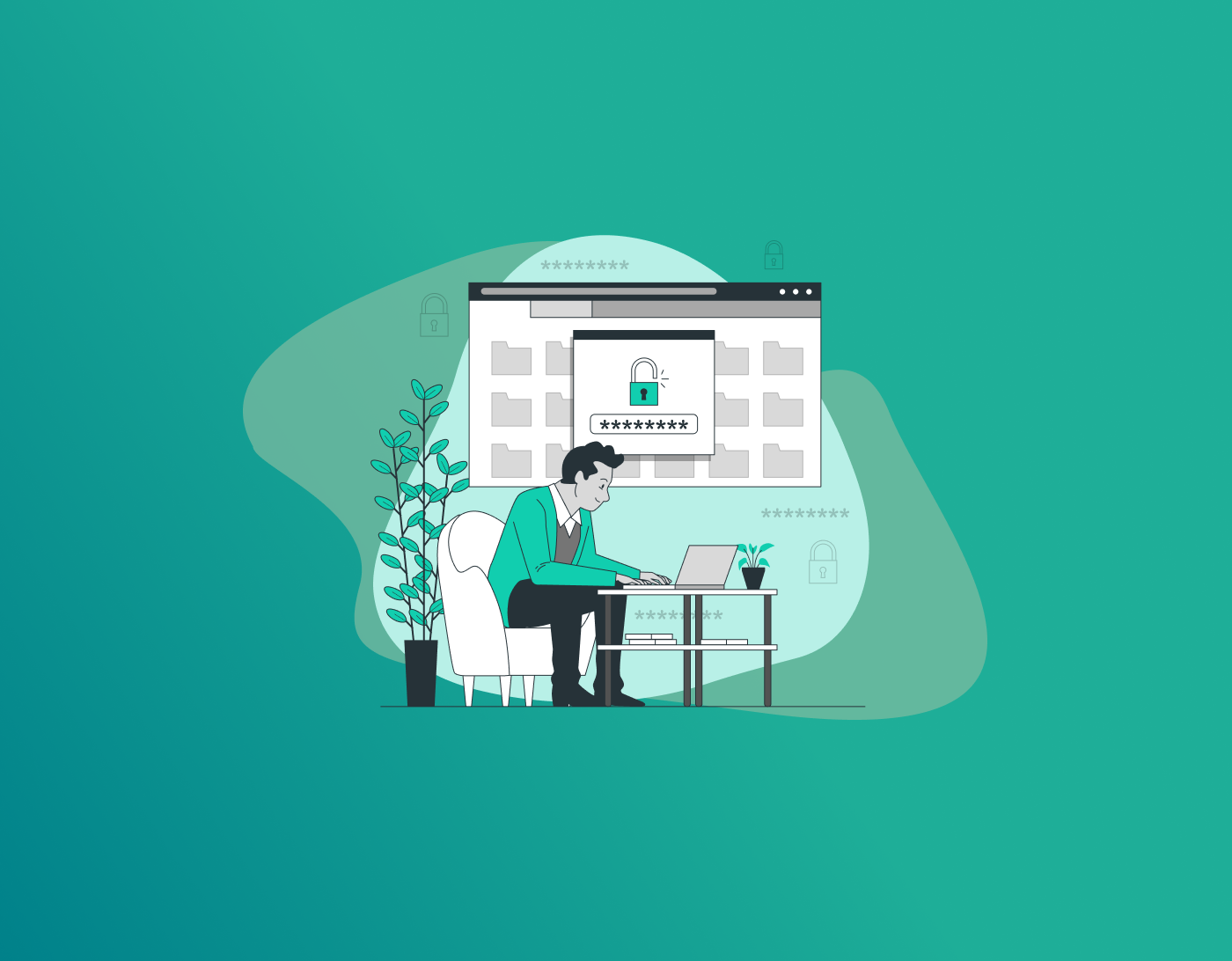
Hackers are always hunting for your login details, including your username, passwords, and anything that unlocks your accounts. This shady tactic, called credential harvesting, lets them slip into your personal or work systems. But what exactly is credential harvesting, how it works, and how to stop it from stealing your information?
Note: Credential harvesting is when scammers swipe your login details using tricks like phishing or malware. They fool you into giving up passwords. Fight back with MFA, sharp eyes, and FastestPass password manager to lock down unique passwords.
What is Credential Harvesting?
Credential harvesting happens when scammers trick you into revealing your login information. It’s different from brute-force attacks, where hackers guess passwords or credential details, and they try stolen logins on other websites. This is about getting you to hand over fresh credentials, which they then use to log in to your accounts, from email to bank apps, or even company networks.
Once they have hold of your logins, they can do serious damage. For example, they can steal your money, hijack your social media, or breach sensitive systems. A recent report says that about 30% of cyberattacks in 2024 started with credentials grabbed through credential harvesting. Since many people use the same password everywhere, one stolen set can unlock a ton of doors. FastestPass password manager helps by making unique, hard-to-break passwords for each of your accounts, so a single slip-up doesn’t affect you everywhere.
How Do They Pull Off Credential Harvesting?
Scammers have a lot of tricks to steal your logins. Credential harvesting comes in different forms to catch you when you’re not paying attention. Here’s how they do it:
- Phishing Tricks
Phishing is the top method for credential harvesting. You get an email, text, or even a call that seems normal, maybe from your bank saying there’s an issue or tech support asking you to verify your account. They’ll manipulate you to click a link that takes you to a fake login page, one that looks so real you don’t think twice before typing in your details. For example, you might get an email saying your PayPal account is frozen unless you log in to their suspicious website.
FastestPass password manager has your back here. It only fills in your login info on real websites, so if you hit a fake page, it stays quiet, tipping you off that something’s wrong.
- Malware and Keyloggers
Malware is another method for credential harvesting. Say you download a dodgy file or click a bad link, next thing you know, your device’s infected. Keyloggers, a kind of malware, spy on every key you press, grabbing your usernames and passwords as you type them. Some malware even rummages through your browser’s saved logins if they’re not locked up tight.
FastestPass password manager keeps your credentials in a super-secure vault, encrypted so malware can’t touch them. It also warns you if your info shows up in a data leak, so you can change your passwords before trouble starts.
- Man-in-the-Middle Attacks
In a man-in-the-middle (MITM) attack, hackers jump into the middle of your connection to a website. Picture yourself on an airport Wi-Fi, and they can snatch your credentials as you log in. Or they might trick you into hitting a fake site that scoops up your details right then and there.
- Pharming and Watering Hole Scams
Pharming hacks your internet setup to redirect you from real sites to fake ones, no click needed. Watering hole attacks hit sites you visit a lot, like a hobby forum, lacing them with malware to steal your logins. Both lean on you, trusting familiar places to nail credential harvesting.
- Credential Dumping
If hackers already have a foot in your system, they might try credential dumping, like pulling usernames and passwords right out of memory or databases. Tools like Mimikatz can grab logins from Windows machines, giving attackers ready-to-go credentials.
Why Credential Harvesting Is a Big Problem
Credential harvesting hits hard. For you, it could mean your bank account gets drained, your social accounts get taken over, or your identity gets stolen. For businesses, it’s a disaster: leaked data, massive fines, and a trashed reputation.
The worst part? Credential harvesting is hard to notice and catch. Hackers use real credentials, so they fly under the radar, sometimes for months, while they dig deeper or plant more trouble. If you reuse passwords, one breach can spiral into chaos across all your accounts. FastestPass password manager stops this by giving every account its own tough password, so one weak spot doesn’t take down everything.
How to Keep Your Credentials Safe
Beating credential harvesting means staying sharp, building good habits, and using the right tools. Here’s what you can do to stay protected:
- Use Multi-Factor Authentication (MFA)
MFA puts up an extra hurdle, something like a code sent to your phone that hackers need beyond your password. Even if they steal your credentials, they’re stuck without that second step. Most apps, from Gmail to your bank, let you turn on MFA, so do it.
- Get a Password Manager
FastestPass password manager is a must for dodging credential harvesting. It creates strong, one-of-a-kind passwords for every account, locks them in an encrypted vault, and only uses them on legit sites. It also keeps watch for data breaches, letting you know if your logins are out there so you can act fast.
- Don’t Get Trapped by Phishing
Phishing works because it plays on your trust, so keep your guard up. Skip links in random emails or texts, and check website addresses before you log in. FastestPass password manager helps by not filling in your details on fake sites. Learning to spot scams through practice or just paying attention makes a big difference.
- Protect Your Devices
Run a good antivirus to catch malware like keyloggers. Don’t use public Wi-Fi without a VPN, and make sure your router’s software is up to date to block MITM or pharming attacks. Keeping your apps and system patched closes holes hackers try to sneak through.
- Watch Your Accounts
Check your accounts for anything strange, like logins from places you don’t recognize. Set up alerts for strange activity, and if you think something’s off, change your passwords right away.
Why Password Managers Are Your Best Bet
Password managers are clutch for staying safe from credential harvesting. FastestPass password manager makes it easy with a clean setup, bulletproof encryption, and handy features like breach alerts and phishing protection. By whipping up unique passwords and only working with real sites, it keeps your accounts locked down, even if one gets hit.
FAQs
Watch for signs like logins from weird locations, password reset emails you didn’t ask for, or money moving without your okay. FastestPass password manager can ping you if your details show up in a breach, so you can lock things down fast. It exploits trust and bad habits. Fake emails look real, and if you reuse passwords, one stolen login can open a ton of accounts. Credential harvesting slides by because it’s hard to catch until the damage is done. Credential harvesting is about stealing your login credentials, such as through phishing or malware. Credential stuffing uses old, leaked credentials to try logging into other sites. Both are bad news, but harvesting’s about grabbing new info, while stuffing’s about reusing stolen information. MFA doesn’t block credential harvesting, hackers can still grab your password. But it stops them from logging in without that extra step, like a code from your phone. Use it with a password manager for max protection. Swap your passwords right away if you suspect a leak. For critical accounts, refresh them every six months to a year, and always use different passwords to keep credential harvesting from spreading.
Final Words!
Credential harvesting is an effective and dangerous trick where hackers swipe your logins to cause all kinds of trouble. Whether it’s phishing, malware, or sneaky MITM attacks, they’ve got ways to get you. But you can fight back. Turn on MFA, stay sharp for scams, and use FastestPass password manager to keep your passwords tough and safe. With its breach alerts and phishing smarts, FastestPass is like a lock on your digital doors.
Generate passkeys, store them in vaults, and safeguard sensitive data! Receive the latest updates, trending posts, new package deals,and more from FastestPass via our email newsletter.
By subscribing to FastestPass, you agree to receive the latest cybersecurity news, tips, product updates, and admin resources. You also agree to FastestPass' Privacy Policy.
Secure and Create Stronger Passwords Now!
Subscribe to Our Newsletter







